| Columns Retired Columns & Blogs |
Primare CD31 CD player Measurements
Sidebar 3: Measurements
From its unbalanced jacks, the Primare CD31's maximum output level at 1kHz was 2.086V, just 0.37dB higher than the CD standard's 2V. As expected, the balanced output was exactly twice the unbalanced value, at 4.173V. Both outputs were absolute-polarity correct; ie, non-inverting (the XLRs are wired with pin 2 hot, the AES standard). The output impedance was a low 100 ohms across the audioband from the unbalanced jacks and, again as expected, exactly twice that figure from the balanced jacks. Error correction was superb, the CD31 suffering no audible glitches in its output until the gap in the data spiral on the Pierre Verany Test CD reached an astonishing 2.5mm in length. Surprisingly, the error flag in the digital data output was not set when the player's output muted with a gap this long.
The CD31's frequency response was perfectly flat (fig.1, top pair of traces), and identical from the balanced and unbalanced outputs. The response error with pre-emphasized data (fig.1, bottom traces) was negligible, though a slight top-octave boost is evident. Channel separation was superb, at better than 100dB below 1kHz, though this did decrease to a good 77dB at 20kHz due to the usual capacitive coupling (not shown).
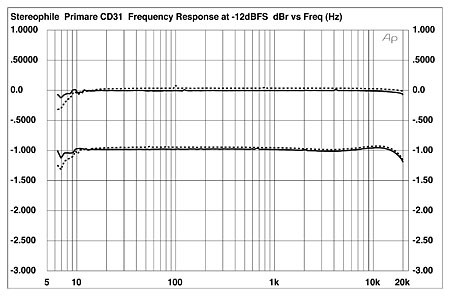
Fig.1 Primare CD31, frequency response at –12dBFS into 100k ohms without (top) and with (bottom) de-emphasis (right channel dashed, 0.5dB/vertical div.).
Playing back data representing a dithered 1kHz tone at –90dBFS and sweeping a 1/3-octave–wide bandpass filter from a center frequency of 20kHz to one of 10Hz gave the spectral analysis shown in fig.2. No harmonic or power-supply spuriae can be seen, and the noise floor in this graph is actually that of the dither noise recorded on the test CD. Repeating the analysis with a "digital black" signal and a 200kHz bandwidth (not shown) indicated that the CD31 has very low analog noise. Though this graph did unmask a power-supply component at 120Hz, at a level of –130dBFS this will be of zero concern, even to the keenest-eared audiophile!
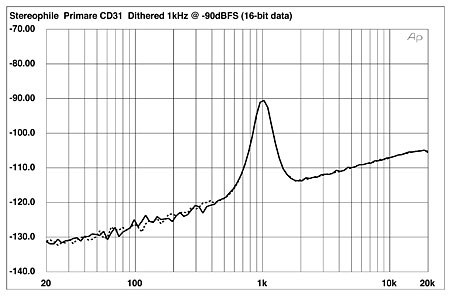
Fig.2 Primare CD31, 1/3-octave spectrum with noise and spuriae of dithered 1kHz tone at –90dBFS (right channel dashed).
Testing the Primare player's linearity error with a dithered 500Hz tone swept from –60dBFS to –120dBFS really shows only the effect of the dither noise (fig.3). The CD31's own noise is so low in level, and its linearity sufficiently good, that its playback of an undithered 1kHz tone at exactly –90.31dBFS was textbook in its symmetry and in its representation of the three DC voltage levels described by the data (fig.4).
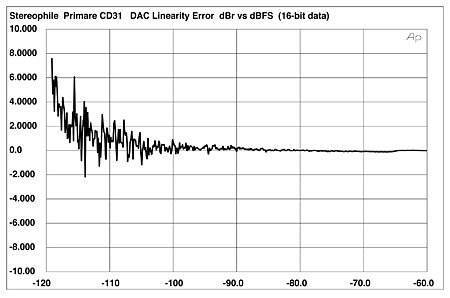
Fig.3 Primare CD31, left-channel departure from linearity, 16-bit data (2dB/vertical div.).
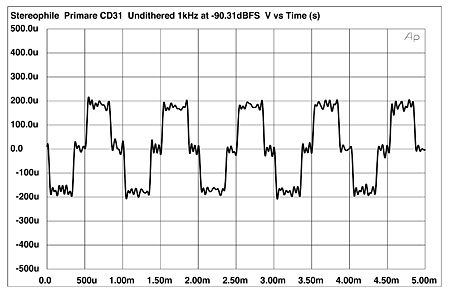
Fig.4 Primare CD31, waveform of undithered 1kHz sinewave at –90.31dBFS, 16-bit data.
The Primare CD31 was similarly superb when it came to distortion. Fig.5 shows an FFT-derived spectrum of its unbalanced output while it reproduced a full-scale 1kHz tone into a fairly low 8k ohm load. The THD (true sum of the harmonics) was 0.0011% in both channels, with the second harmonic the highest in level at –100dBFS. Higher harmonics are all lower in level, though a trace of fifth harmonic made an appearance in the right channel only (circled in red). The distortion didn't rise when I reduced the load to just 600 ohms, suggesting that the CD31 will not be fazed by any load it will see. Intermodulation distortion was also superbly low in level, even into demanding loads (fig.6).
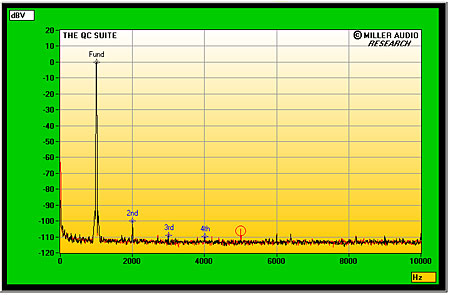
Fig.5 Primare CD31, spectrum of 1kHz sinewave at 0dBFS into 8k ohms, unbalanced (linear frequency scale).
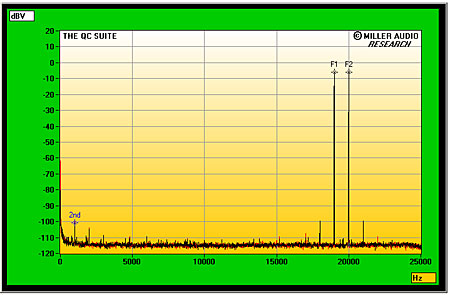
Fig.6 Primare CD31, HF intermodulation spectrum, 19+20kHz at 0dBFS peak into 8k ohms, unbalanced (linear frequency scale).
As always with CD players, my final test was to examine the Primare's analog output for evidence of word-clock jitter, using the Miller Jitter Analyzer and a special test signal comprising a high-level sinewave at 11.025kHz and a low-level squarewave at 229.6875Hz. (Both tones are exact integer submultiples of the sample frequency, meaning that any spuriae in the player's output will not be due to quantizing errors.) The jitter level was a low 239 picoseconds peak–peak, with most of the jitter coming from a pair of sidebands at 11.025kHz, ±229.6875Hz (fig.7, red "4" markers); and another at ±15.1Hz (purple "1"). This is excellent performance.
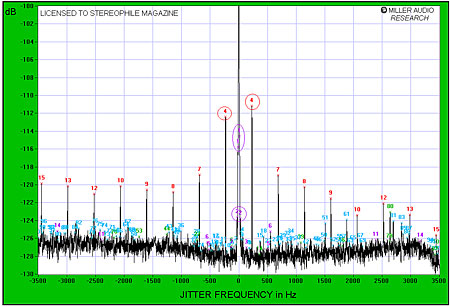
Fig.7 Primare CD31, high-resolution jitter spectrum of analog output signal (11.025kHz at –6dBFS, sampled at 44.1kHz with LSB toggled at 229Hz), 16-bit CD data. Center frequency of trace, 11.025kHz; frequency range, ±3.5kHz.
Overall—and in common with some other players recently reviewed in Stereophile, from Linn, Naim, Simaudio, and Nagra—Primare's CD31 offers state-of-the-art "Red Book" CD performance.—John Atkinson
- Log in or register to post comments



































